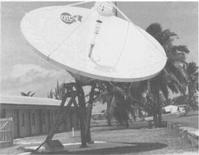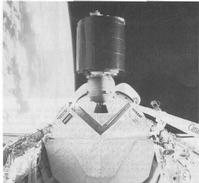


Chapter 8
I Part 1: Communications
i Before the Telegraph
ii Electrical Communication Before Federation
iii Federation to the End of the Second World War
iv Post-war and on to 1975
v 1975 ONWARDS
II Epilogue
III Part 2: Early Australian Computers And Computing
IV Acknowledgements
References
Index
Search
Help
Contact us

1975 ONWARDS (continued)
Tenders were let in 1985 for a building, while an L. M. Ericsson SPC AXE-10 digital exchange, having a CCITT No. 7 signalling capacity, was ordered for installation in the new building and a similar but much larger exchange was ordered for Broad-way, Sydney, to follow the Scoresby installation. These installations will take international communications into the digital era and are co-ordinated with developments by Telecom of the national network. Since L. M. Ericsson is manufacturing AXE-10 digital switching equipment for Telecom in their Melbourne factory, a relatively high proportion of the equipment supplied to OTC will be Australian content, with OTC contributing significantly to the development of the software specific to its requirements.The new technologies are being used also to extend progressively modern communications to Australia's territories in the Indian and Antarctic Oceans, which have previously relied on H.F radio. In 1985, satellite earth stations were installed on Christmas and Cocos Islands and similar stations are planned to be installed at Antarctic bases during 1987-88.

While technological developments result in greatly improved national and international communications, sea going ships continued, until quite recently, to rely on Morse code telegraphy. As a step towards rectifying this situation, the International Maritime Satellite Organisation (INMARSAT) was established in 1979, with the objective of providing world-wide satellite based comprehensive service for maritime use. OTC was a signatory of INMARSAT when it was established in 1979 and contributed to the work leading to its establishment, with Mr. C. Vahtrick chairing the Preparatory Committee's Organisational Panel. By mid-1986 some 4,000 seagoing ships had been equipped with satellite terminals.
New services now offered via INMARSAT include 56kbps data (ship/shore only) and television (shore/ship only). Work is currently in hand to introduce an aeronautical service and a very small terminal for 600 bps text communications, called Standard 'C'. This latter could be the most important innovation from a sea-safety perspective, since the low cost and small physical size make the device suitable for installation as a life-boat communication system as a backup to the large number of small ships which may find the Standard 'C' terminal attractive. This could open a significant new market for Australia and could make necessary the provision of an Australian CES much earlier than was anticipated. Meanwhile, OTC makes use of the CES facilities in Singapore, Japan and the USA for its INMARSAT traffic.
Following a series of studies undertaken for the Australian Government in the late 1970s a decision in principle to proceed with an Australian national satellite system was taken in October, 1979. A small planning and development team was set up, initially in OTC but transferred to Aussat Pty. Ltd. in 1982, to undertake the system design and prepare the tender documentation which was released in late 1980. After world-wide tendering the contract for the manufacture of the satellites was awarded in May, 1982 to Hughes Communications International, a subsidiary of Hughes Aircraft Company. System design was essentially an Australian contribution.

Organisations in Australian Science at Work - AUSSAT; CCITT (International Consultative Committee for Telephony and Telegraphy); INMARSAT (International Maritime Satellite Organisation); Overseas Telecommunications Commission (O.T.C.); Telecom Australia (Australian Telecommunications Commission)
People in Bright Sparcs - Vantrick, C.
 |
Australian Academy of Technological Sciences and Engineering |  |
© 1988 Print Edition pages 604 - 605, Online Edition 2000
Published by Australian Science and Technology Heritage Centre, using the Web Academic Resource Publisher
http://www.austehc.unimelb.edu.au/tia/578.html